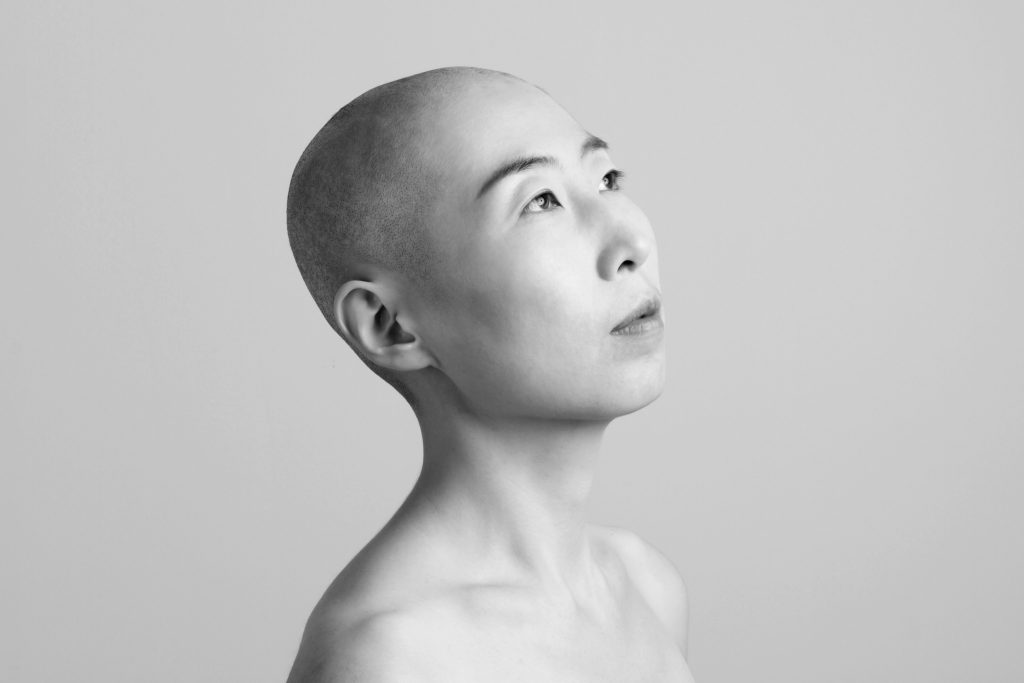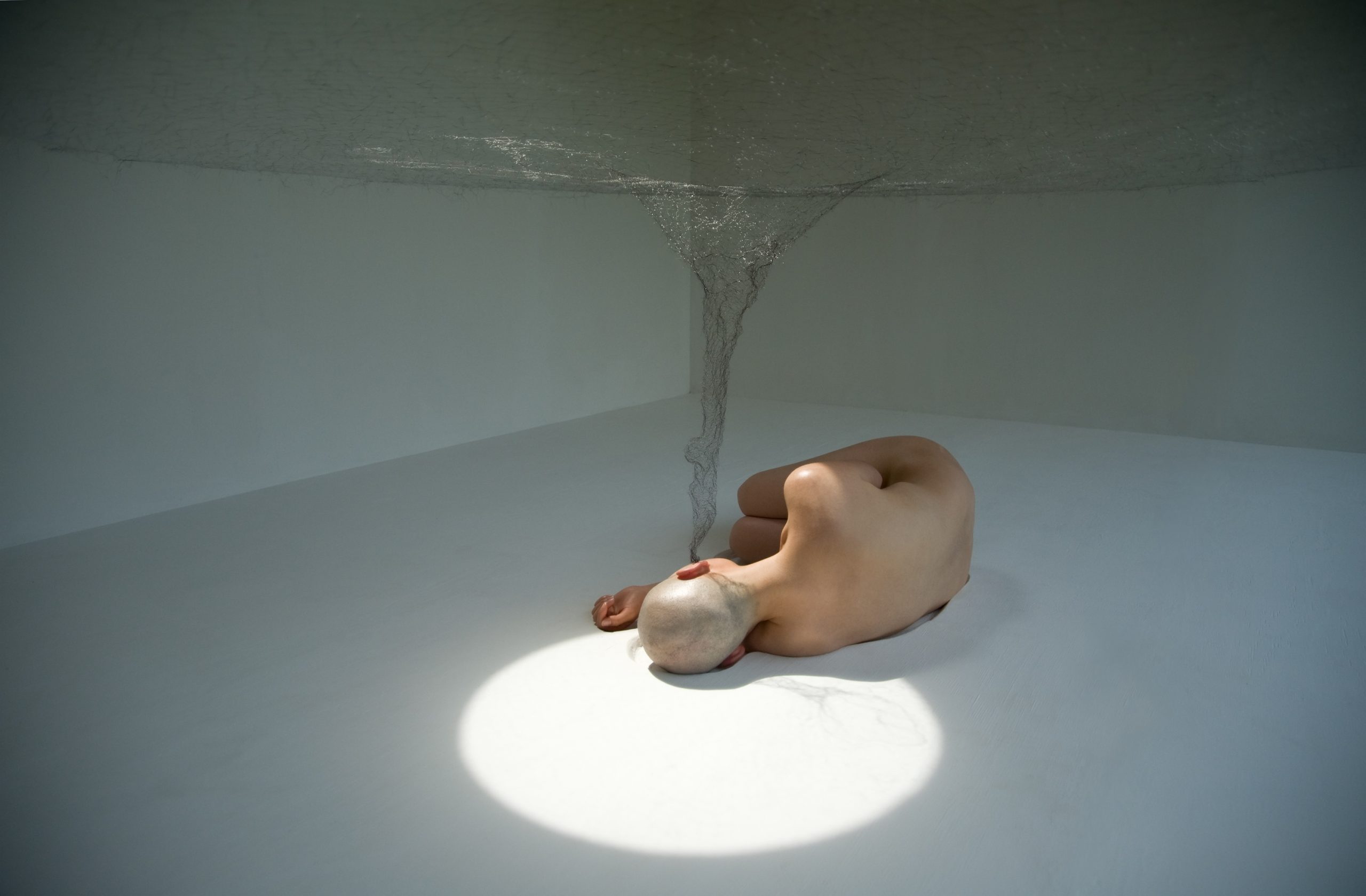There’s nothing like Jayoung Yoon’s work. She is a New York-based artist born in South Korea and an award-winner. She is known for interdisciplinary artworks using human hair as a medium and for being creative and original with her art, which taken her to showcased her solo exhibitions at venues. To Jayoung Yoon, her artistic work draws upon the mind-matter phenomenon, which explores thought systems, perception and body sensations. She also manages to shift the viewer’s awareness toward subtle perceptions of the human hair that are often taken for granted.
Read our full interview with the artist herself:
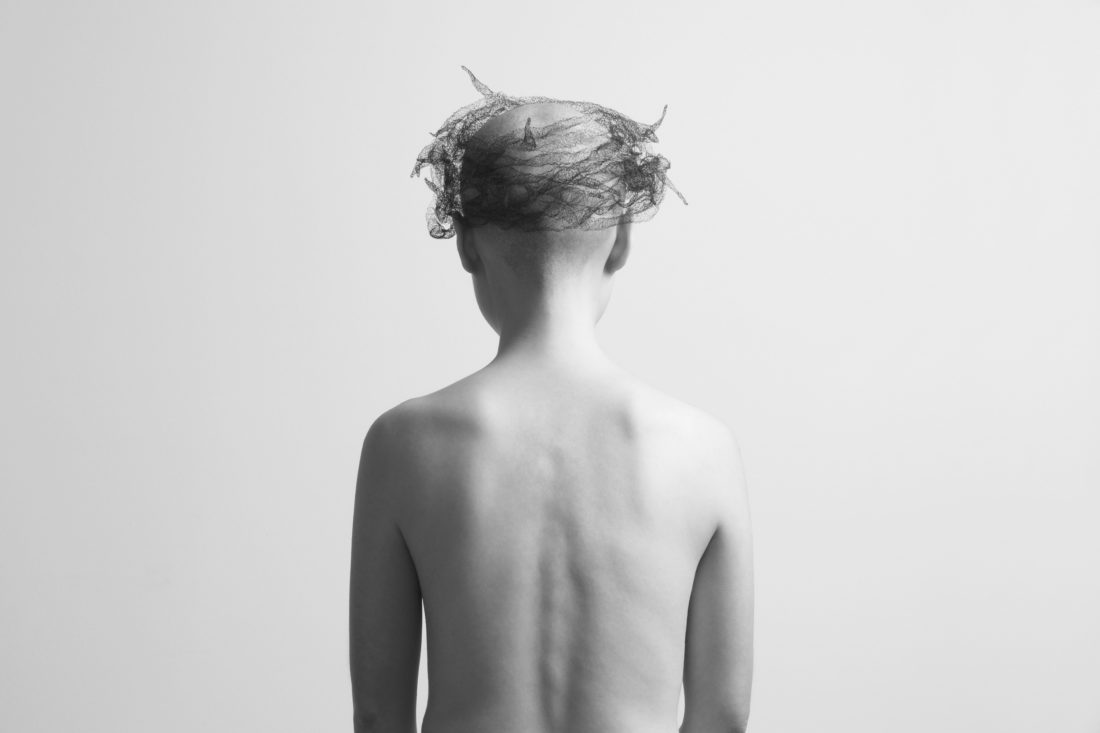
Who is Jayoung Yoon?
Jayoung Yoon is an interdisciplinary artist using Human Hair as a medium. She was born and raised in South Korea and moved to the USA in 2006 for college, and currently works and lives in New York.
What is art to you? Why did you decide that human hair is what you wanted to work with?
To me, Art is an expression that reflects an artist’s personal, cultural, social and spiritual experiences through countless mediums and forms. Art can show insights into hidden truths, and be a transformative experience for an audience.
My choice to use hair stems from my personal experience growing up in Korea. My mother is a Korean traditional dancer, feminist, activist, and therapist. She often dances for Korean Comfort Women who were forced into sexual slavery by the Japanese Army during World War II. At the end of her performance, she usually invites the audience to dance together. I grew up watching her dance and seeing the audience’s tears and laughter. I started to think of a body as a tool for the cleansing of memories, not only personal memory but also collective memory, through the physicality of the present.
In my early works, I used thread to make installation works. I created a metaphorical space between physical pain and spiritual growth. As my body was taking a primary role in my process of art-making, I was looking for a material that can represent both body and mind. Human hair is intimately corporeal, tactile and focuses the viewer’s attention on the body. Since I tie hair lengths together piece by piece, into a structure that is mostly air, my hair sculptures become transparent like the invisible thoughts, and memories.
What informs your work and where do you draw inspiration from?
In 2005, a year before I moved to the USA, I attended a spiritual retreat in South Korea. I learned the practice of fully inhabiting the present, cleansing the memory, and acknowledging our duality. It was a turning point for the way I think.
Since then, my art has been influenced by diverse spiritual practices and texts that emphasize clearing the mind and directing attention into the body to achieve a heightened awareness of the present.
I am interested in diverse spiritual practices & mystical texts. For example, A Course in Miracles by Helen Schucman, The Disappearance of the Universe by Gary Renard, The Power of Now by Eckhart Tolle, and other author’s like Deepak Chopra, and Anita Moorjani. Also, since my work relates to meditative action, emptying the mind and thought, I found a connection between Buddhism and my work. I like the books by Dzogchen Ponlop, Thich Nhat Hanh, and H. H. the Dalai Lama.

Tell us more about your artistic process. How do you draw upon the mind-matter phenomenon?
I am interested in quantum physics. Many scientists and spiritual thinkers have found there are many connections between quantum physics and spirituality. In physics ‘the act of observation changes that which is being observed.’ In spirituality, our thoughts create our own reality. In other words, our mind can affect the matter.
If we want to change our reality, we need to go to the origin or cause in our mind. In my video/performance work, I often try to visualize cleansing my thoughts and negative emotions through video performance.
Using hair led me to make forms that were mostly transparent, like the invisible thoughts, and memories. Video let me explore this transparent quality of the sculptures more deeply as a cleansing gesture. ‘Invisible thoughts’ are lifted away from my head, or body, and disappear through meditative ritual.
Also, some of my hair sculptures are related to mind and matter. For example, I made a piece called ‘Infinite inner and outer space,’ stemming from the idea that our thoughts create our reality.
The shape is originated from the Klein bottle. It is an example of a non-orientable surface, much like a Mobius Strip. Both are a surface that blurs the distinctions between inner and outer. For example, if you walked a straight path along the outer surface plane of a Klein Bottle, you would eventually end up inside, and then eventually back to the original point on the outside. So the sculpture symbolizes that everything we perceive in the physical world has its origin in the inner world of our thoughts and beliefs.
What’s your favorite project you’ve ever worked on and why?
One of my favorite projects is my video ‘Listening to the Mind.’ I constructed a white space in a huge field. The stage size was 18×12 feet. I cut a hole in the ceiling, allowing natural light to come in from sunrise to sunset. I set up a hair sculpture in the middle of the space and connected it to my ear. My first transformative experience with meditation was through this durational performance. While I was lying still on the floor for ten hours, the only thing I could do was observe my breath, and feel all the different sensations throughout my body. I felt the subtle movement of the hair sculpture, and listened to the bird and insect sounds, and felt the wind, the light changing and the temperature changing on my naked body. I was totally in the present. It was a transformative experience for my body and mind.
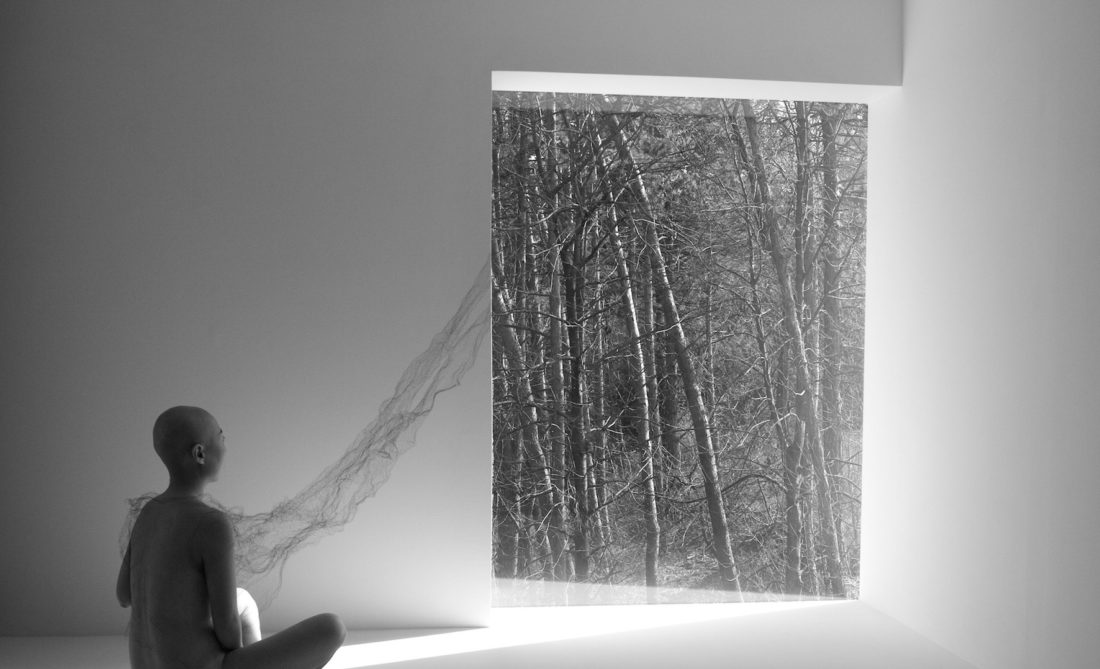
Your work involves being creative and original with your art. What are some of the artistic difficulties you’ve faced?
If I don’t rest and exercise enough, my body can get hurt from the long duration of repetitive work. So physical endurance is a very challenging part of my artistic process. Time is also a major challenge. I have one work in progress that may take me a decade to finish. The sculpture will be slowly hand-knotted but should be over 30 feet tall when it is finished. I have been working on it for a few years so far, and have woven about 5 feet.
How is your personality reflected in your work?
I would say I am a patient person. It is a time-consuming & labor-intensive process, but I really enjoy the meditative aspect of hair weaving. At first, I have many thoughts in my head. But, as I work, my mind becomes quite like it does during meditation.
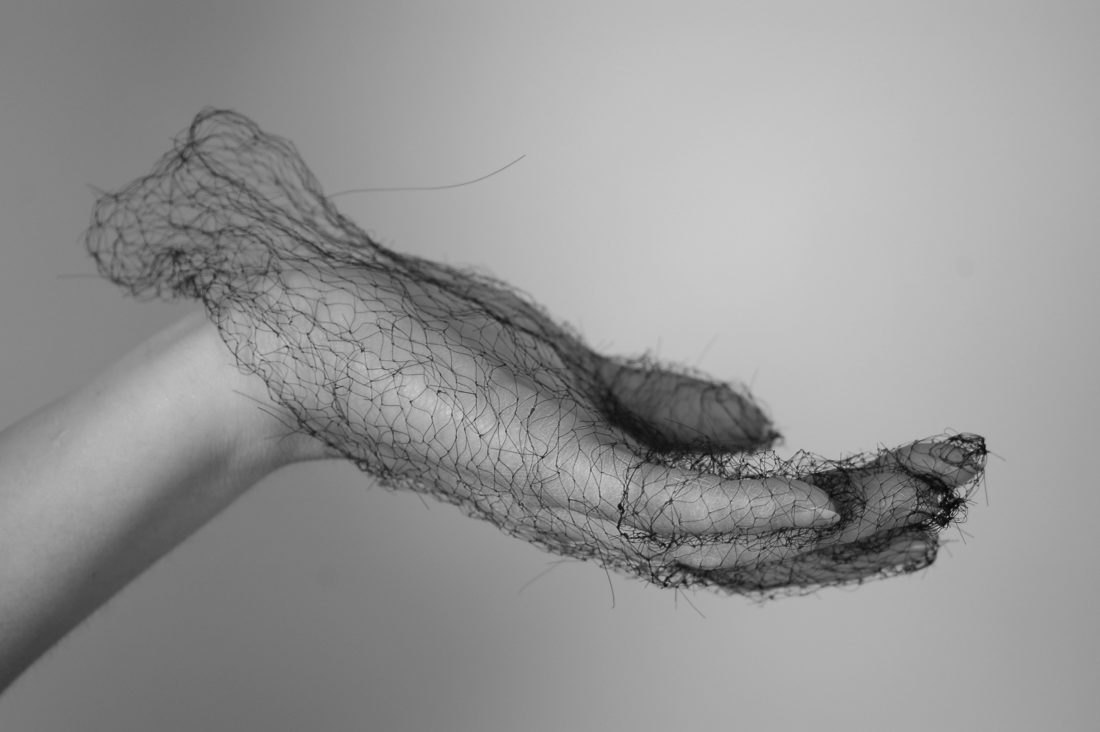
Which area that is non-hair related do you find yourself constantly inspired by?
I find inspiration from many different activities in daily life, meditation, dance practice, nature walks, reading books and articles, watching movies, going to exhibitions, and having good conversations with friends, etc. I get most inspired when I do all these activities while being present in the moment.
What’s the most indispensable item in your studio?
My main material is Human hair, so I sort and collect it in boxes. I mostly tie hair lengths together piece by piece, by hand, but I sometimes use needles, scissors, and glue.
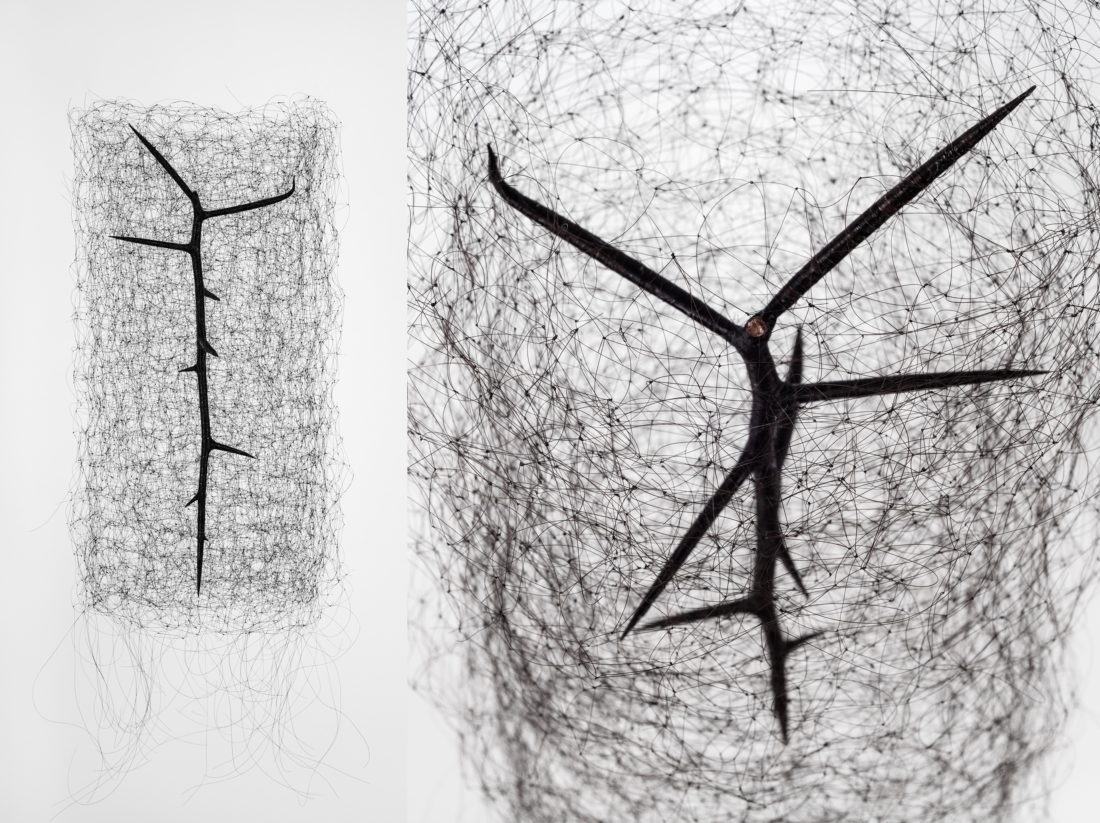
What’s the biggest lesson you’ve learned, and would you pass along to others just getting started in your field?
It is so hard to make a sustainable career out of being an artist. But, I learned that it is important to keep trying to listen to your own inner voice, and every day, continue to make artwork with dedication and focus.
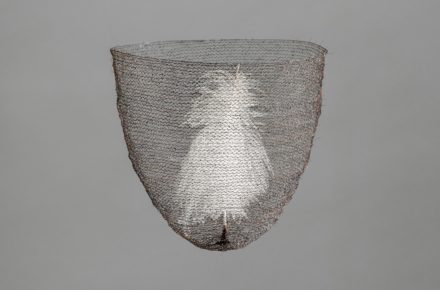
Instagram: https://www.instagram.com/jayoungart/
Facebook: https://www.facebook.com/JayoungYoonArt
Twitter: https://twitter.com/jayoungart
Credits
Images: Jayoung Yoon
Interview: Romy

